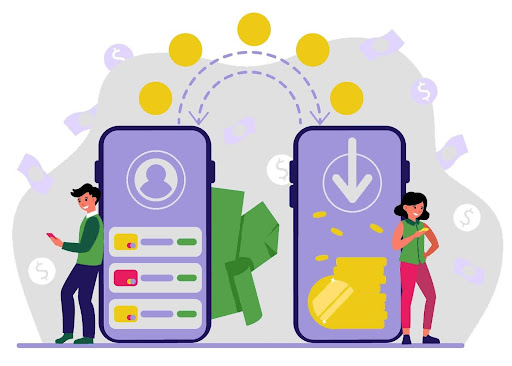With cellphones and continuous connectivity, mobile apps have evolved into a necessary tool in daily life. Almost everything is covered by an app, from social media and gaming to productivity and e-commerce.
Mobile apps present a great chance for developers and businesspeople to make money. Making money from mobile apps, however, calls for a calculated approach rather than only a brilliant concept. Working with a US based mobile app development company can help turn that concept into a successful reality.
We will go over several monetizing techniques and best practices in this blog article to enable you to profit from your mobile app.
1. In-app marketing
In-app advertising is among the most common methods a mobile app could be monetized. Showing advertising to consumers allows you to create income depending on impressions (CPM), clicks (CPC), or another engagement statistic.
- Little rectangular banners called banner ads show up either at the top or bottom of the screen. Although they are straightforward to use, consumers may often overlook them.
- Full-screen adverts called interstitial ads show up at app natural transition points—between game levels, for example. Although they have better engagement rates, if utilized excessively they can be invasive.
- Rewarded Video Ads: Watching a video ad entitles consumers to a reward—such as extra life or in-game money. Users generally find them to be really interesting.
Native advertisements offer a less invasive experience since they fit the content of the app so perfectly. Their more interesting design reflects the look and feel of the app.
2. In-App Buys (IAP)
Users of in-app purchases can purchase virtual products or premium features within an app. Gaming and lifestyle applications especially value this approach since consumable purchases—like virtual money, additional lives, or game boosts—can be used just once.
- Items classified as non-consumable purchases—those like deleting advertisements or unlocking extra features—can be utilized indefinitely.
- To access premium information or features, users pay a regular fee—weekly, monthly, or annual. Applications in streaming, fitness, and productivity all frequently feature subscription structures.
3. Freemium Structure
The freemium approach is charging for premium services or content while the software is offered for free. Using this approach lets consumers test the app before making a purchase commitment.
- From basic to premium: For free offer a rudimentary version of the app with few functions; pay for a premium edition with sophisticated capabilities.
- Trial Length: Give consumers a limited time free trial of the premium edition. Users can decide to buy the premium features or subscribe following the trial term.
4. Paid Programs
One simple way to monetize is charging consumers a one-time fee to download the app. To persuade consumers to pay upfront, nevertheless, this strategy calls for a solid value offer.
- Price Strategy: Based on market research and the value your software offers, ascertain a competitive pricing.
- Frequent updates help the program to be constantly improved and justify the upfront expense by keeping users involved.
5. Collaboration and Sponsorship
Through sponsorships and alliances, working with companies and brands can offer other income sources.
- Included sponsored content or features within the app. For exclusive workouts or discounts, a fitness app might, for instance, team with a sportswear company.
- Brand Cooperation: Work with businesses to produce app co-branded experiences or special promotions.
6. Affording Marketing
Afford marketing is advertising outside-of-house items or services inside the app and getting paid a commission for every sale or activity made via your recommendation.
- Product Recommendations: Add affiliate links and provide consumers pertinent goods or services.
- Join affiliate networks to get access to a large spectrum of goods and services to advertise inside the app.
Guidelines for Mobile App Monetization
- User Perspective: Prioritize the user experience by ensuring that monetization strategies do not disrupt the app’s usability. Ads should be relevant and non-intrusive, and in-app purchases should provide real value.
- When considering android app development services, ensure that the design and functionality are optimized for a seamless user experience on Android devices.
- This includes adhering to Android design guidelines, optimizing for different screen sizes, and ensuring smooth performance across various devices.
- Use analytics tools to monitor user behavior and pinpoint the most successful monetizing techniques. Constantly improve your strategy depending on user comments and facts.
- Spread Income: Dependencies on one income source might be dangerous. To best maximize income possibilities, think about combining many monetizing techniques.
- Transparency: Tell consumers straightforwardly about your approaches of monetizing. Clearly explain the advantages of premium features or in-app purchases, then steer clear of dishonest tactics.
- Legal and ethical considerations: Make sure your approaches of monetizing follow legal rules and app store policies. Give user privacy first priority and avoid dishonest methods.
Conclusion
By using several monetizing techniques—in-app advertising, in-app purchases, the freemium model, paid apps, sponsorships, and affiliate marketing—one can make money from mobile apps.
Your mobile app will be sustainable and successful if you concentrate on user experience, leverage analytics, and vary revenue sources.
Long-term success depends on constantly tweaking your monetization strategy and keeping educated about industry trends as the market for mobile apps keeps expanding.
